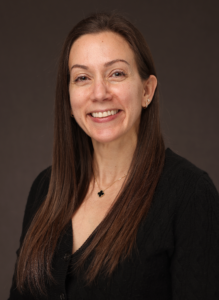Advancing Patient-Driven Care with the National Clinical Governance Board

Board Chair, Joan Kolodzik, MD, FACEP, explains, “The NCGB is the advocate for both our frontline clinicians and our patients. We are committed to narrowing variability, reducing risk, and raising quality. If we can provide our clinicians with the support to make well-informed choices, we believe that we can benefit patient care directly.”
To fulfill this mission, the NCGB has brought together a diverse group that forms a powerful brain trust for solid decision-making. The board is comprised of three emergency medicine physicians from each of our divisions, two hospital medicine physicians, a critical care physician, and a pediatric emergency medicine physician. Board members serve a three-year term with the opportunity to rerun for a second consecutive term, and elections are held in June to fill open positions. Divisions vote for their representatives, while the remaining seats are voted on by clinicians who work in the respective service lines (CC, HM, PEM).

In addition, the NCGB consists of several evolving committees, which serve as think tanks for specialized topics. From geriatric care to freestanding emergency departments, they focus on gathering research to understand what is occurring in a particular field. Many are later institutionalized outside of the NCGB, such as the Pediatrics Committee, which has since become its own service line.
“We reevaluate our committees each year to determine which will be modified based on our priorities,” Dr. Kolodzik says. “Recently, we introduced the Artificial Intelligence (AI) Committee to assess the safety of new technologies for our physicians, APPs, and patients.”
Reflecting on this commitment to innovation, one of the NCGB’s key responsibilities is facilitating the adoption of cutting-edge resources, including the USACSMed app. This app offers clinicians easy access to Clinical Management Tools (CMTs), which are decision-making algorithms for high-risk diagnoses, Inpatient Pathways, tools to help guide decision making and treatment from inpatient admission to discharge, and KidRx, a guide for calculating antimicrobial medication dosages for pediatric patients.
“In collaboration with the CMO team, the NCGB seeks to offer resources that enhance our practice and the care we provide,” Dr. Caloia emphasizes. “For instance, KidRx was developed in partnership with Dell Children’s Medical Center to address variability in the prescriptions being written. Alongside infectious disease, pharmacy, and pediatric experts, we created a solution for clinicians to easily determine the proper antibiotic based on a child’s age and weight, as informed by current literature.”
Describing this initiative as an act of “polishing the art of medicine,” Dr. Kolodzik adds, “We have already seen widespread adoption, with KidRx accumulating over 1,000 monthly uses. In the long-term, these tools have the potential to save lives by equipping clinicians with best practices based on scientific evidence. This is essential for ensuring consistency and driving positive experiences for our patients across our partner sites.”
As the NCGB celebrates such achievements, they also note the importance of looking to fellow clinicians as role models in delivering superior treatment. This is accomplished through the NCGB’s peer-nominated Clinical Excellence Awards, which recognize eight clinicians each year who embody the spirit of the USACS mission.
“These are the clinicians you want to work with and strive to emulate,” Dr. Kolodzik affirms. “We all have memorable patient stories that we carry in our hearts, and these awards allow us to see that heroism in action. I believe in the value of honoring great dedication, and I hope to continue that legacy moving forward.”
While not representative of all their work, these efforts showcase the dynamic nature that characterizes the NCGB. Their needs will evolve as our clinical environment changes—and that change is constant. By embracing continuous improvement, Drs. Kolodzik and Caloia attest to the NCGB’s ability to proactively address the challenges and transformations that shape patient care.

